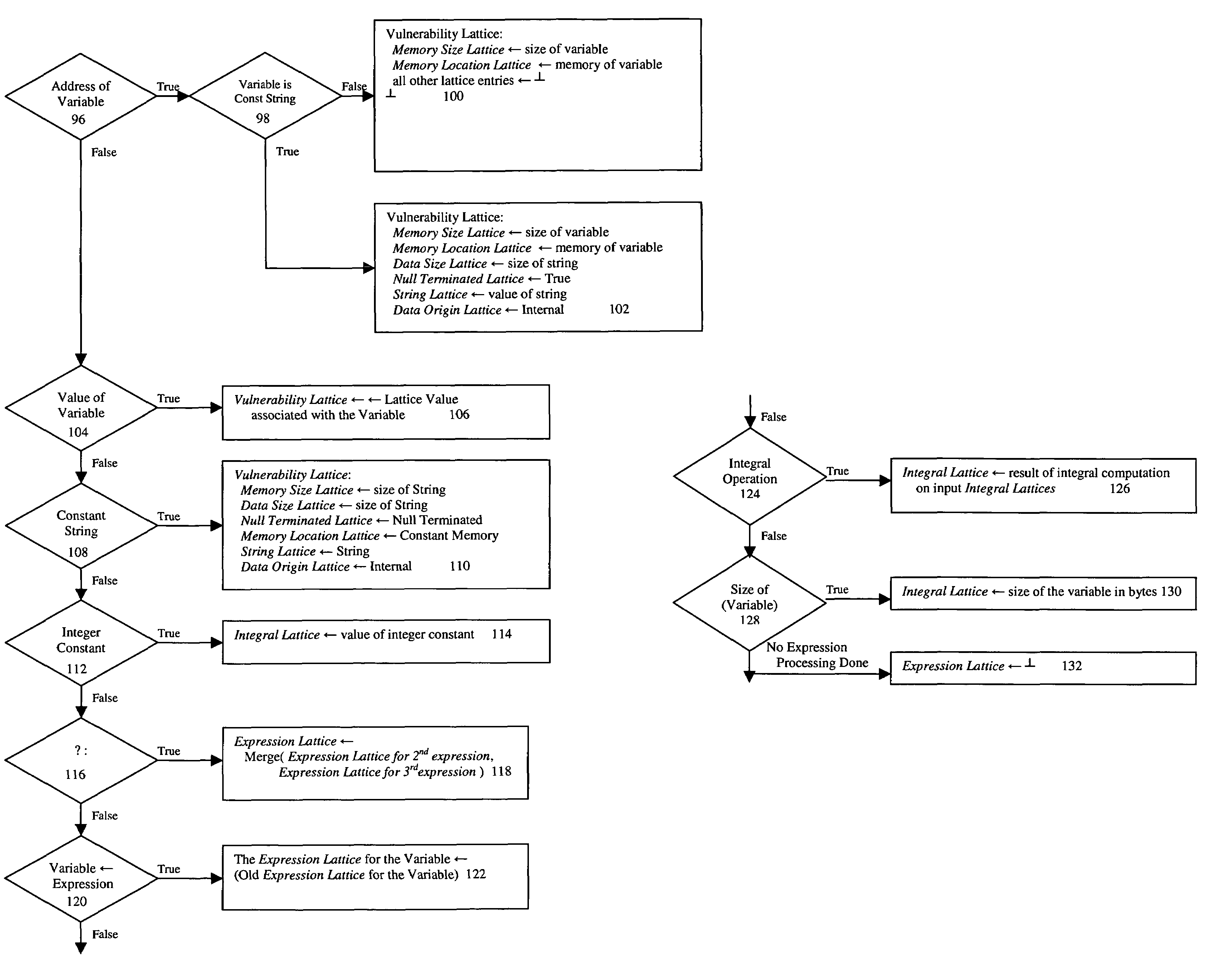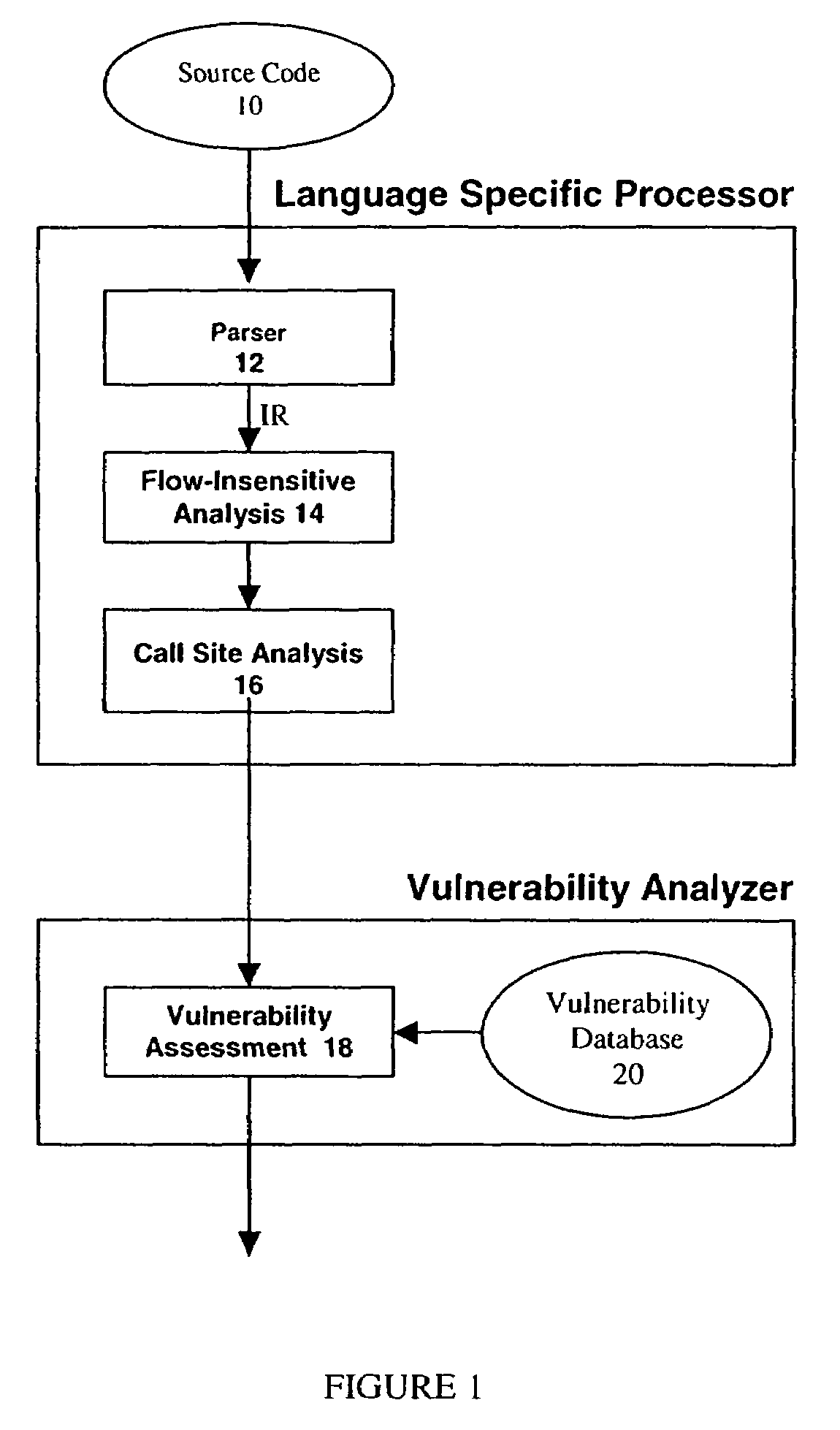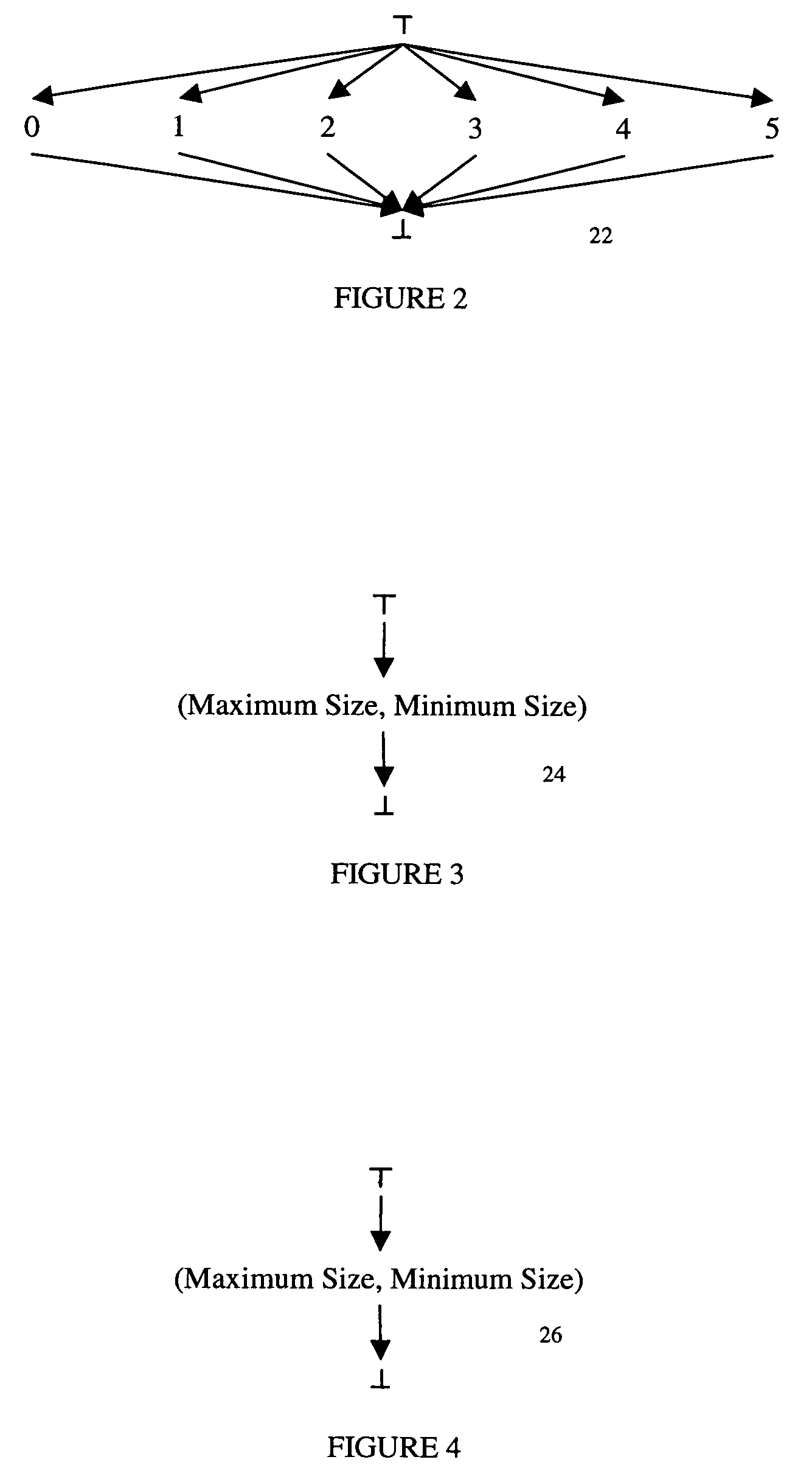Method and system for detecting race condition vulnerabilities in source code
a source code and race condition technology, applied in the field of computer system security, can solve problems such as time-consuming and laborious process, difficulty in detecting “vulnerabilities” in programs, and improper or undesired execution
- Summary
- Abstract
- Description
- Claims
- Application Information
AI Technical Summary
Benefits of technology
Problems solved by technology
Method used
Image
Examples
example 1
[0262]This is the example which had the following language-specific code:[0263]strcpy(buf, p);
[0264]The call site analysis for this call yielded the following vulnerability lattice for the first argument buf:[0265]Memory Size Lattice←100,[0266]Data Size Lattice←⊥[0267]Null Terminated Lattice←⊥[0268]String Value Lattice←⊥[0269]Memory Location Lattice←Stack Memory[0270]Data Origin Lattice←⊥
[0271]The call site analysis also yielded the following vulnerability analysis for the second argument p:[0272]Memory Size Lattice←range of 2 to 4[0273]Data Size Lattice←range of 2 to 4[0274]Null Terminated Lattice←Null Terminated[0275]String Value Lattice←⊥[0276]Memory Location Lattice←Constant Memory[0277]Data Origin Lattice←Internal
[0278]The matching actions returned from the database 20 specify certain rules to be applied in assessing the vulnerability lattices for the call to routine strcpy( ). In the particular case of the call to strcpy the rules check that the first argument has a minimum me...
example 2
[0280]This is the example which had the following language-specific code:[0281]strcpy(y, z);
[0282]The call site analysis for this call yielded the following vulnerability lattice for the first argument y:[0283]Memory Size Lattice←100,[0284]Data Size Lattice←⊥[0285]Null Terminated Lattice←⊥[0286]String Value Lattices←⊥[0287]Memory Location Lattice←Static Memory[0288]Data Origin Lattice←⊥
[0289]The call site analysis also yielded the following vulnerability analysis for the second argument z:[0290]Memory Size Lattice←⊥[0291]Data Size Lattice←⊥[0292]Null Terminated Lattice←⊥[0293]String Value Lattice←⊥[0294]Memory Location Lattice←⊥[0295]Data Origin Lattice←⊥
[0296]The matching actions returned from the database 20 specify certain rules to be applied in assessing the vulnerability lattices for the call to routine strcpy( ). In the particular case of the call to strcpy the rules check that the maximum data size for the second argument is ⊥, and thus unknown. Thus, there is a possibility t...
example 3
[0300]. . . some code A. . .[0301]1) r=access(filename, . . .)[0302]. . . some code B. . .[0303]2) if(r) then[0304]. . . some code C. . .[0305]3) fopen(filename, . . .)[0306]. . . some code D. . .
[0307]In this example, there is a call to access( ) for a particular filename, followed by a test of the return value from access( ). If the test succeeds, fopen( ) is called for the same filename. Placeholders are listed for arbitrary code that could happen around the numbered statements. The fopen( ) call is reachable from the access( ) call; which means that there are no other operations on the file between the two calls, and the fopen( ) call will follow the access( ) call if the test succeeds.
[0308]While this example shows the argument to access( ) and fopen( ) as a single variable name, it is possible that the argument could be any arbitrary expression such as filename_list[i] (an entry in an array of names), or fullpath+baselen (a pointer to a character string baselen characters into...
PUM
 Login to View More
Login to View More Abstract
Description
Claims
Application Information
 Login to View More
Login to View More - R&D
- Intellectual Property
- Life Sciences
- Materials
- Tech Scout
- Unparalleled Data Quality
- Higher Quality Content
- 60% Fewer Hallucinations
Browse by: Latest US Patents, China's latest patents, Technical Efficacy Thesaurus, Application Domain, Technology Topic, Popular Technical Reports.
© 2025 PatSnap. All rights reserved.Legal|Privacy policy|Modern Slavery Act Transparency Statement|Sitemap|About US| Contact US: help@patsnap.com



